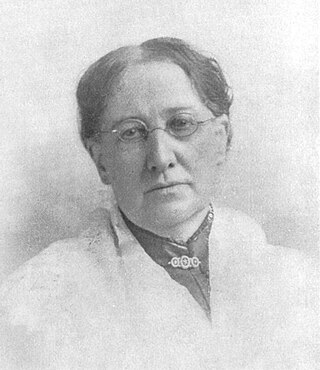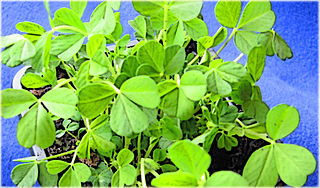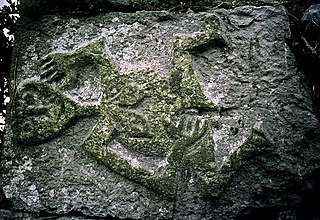
Newfoundland and Labrador is the easternmost province of Canada, in the country's Atlantic region. The province comprises the island of Newfoundland and the continental region of Labrador, having a total size of 405,212 square kilometres. In 2023, the population of Newfoundland and Labrador was estimated to be 533,710. The island of Newfoundland is home to around 94 per cent of the province's population, with more than half residing in the Avalon Peninsula. Labrador borders the province of Quebec, and the French overseas collectivity of Saint Pierre and Miquelon lies about 20 km (12 mi) west of the Burin Peninsula.
David Gregory Malone is a Canadian impressionist and actor. He is well known for the CODCO television series and his impersonations of Barbara Frum, Jean Chrétien, and Queen Elizabeth II.

A sheela na gig is a figurative carving of a naked woman displaying an exaggerated vulva. These carvings, from the Middle Ages, are architectural grotesques found throughout most of Europe on cathedrals, castles, and other buildings.

The Newfoundland Railway was a narrow-gauge railway that operated on the island of Newfoundland from 1898 to 1988. With a total track length of 906 miles (1,458 km), it was the longest 3 ft 6 in narrow-gauge system in North America.

The Irish language was once spoken by some immigrants to the island of Newfoundland before it disappeared in the early 20th century. The language was introduced through mass immigration by Irish speakers, chiefly from counties Waterford, Tipperary and Cork. Local place names in the Irish language include Newfoundland, St. John's, Ballyhack, Cappahayden, Kilbride and St. Bride's, Duntara, Port Kirwan and Skibbereen (Scibirín). The dialect of Irish spoken in Newfoundland is said to resemble the Munster Irish of the 18th century. While the distinct local dialect is now considered extinct, the Irish language is still taught locally and the Gaelic revival organization Conradh na Gaeilge remains active in the province.

In modern Newfoundland, many Newfoundlanders are of Irish descent. According to the Statistics Canada 2016 census, 20.7% of Newfoundlanders claim Irish ancestry. However, this figure greatly under-represents the true number of Newfoundlanders of Irish ancestry, as 53.9% claimed "Canadian" as their ethnic origin in the same census. The majority of these respondents were of Irish, English, and Scottish origins, but no longer self-identify with their ethnic ancestral origins due to having lived in Canada for many generations. Even so, the family names, the features and colouring, the predominance of Catholics in some areas, the prevalence of Irish music, and even the accents of the people in these areas, are so reminiscent of rural Ireland that Irish author Tim Pat Coogan has described Newfoundland as "the most Irish place in the world outside of Ireland."

Carbonear is a town on the Avalon Peninsula in Newfoundland and Labrador, Canada. It overlooks the west side of Conception Bay and had a history long tied to fishing and shipbuilding. Since the late 20th century, its economy has changed to emphasize education, health care, retail, and industry. As of 2021, there were 4,696 people in the community.

The Pride of Baltimore was a reproduction of a typical early 19th-century "Baltimore clipper" topsail schooner, commissioned to represent Baltimore, Maryland. This was a style of vessel made famous by its success as a privateer commerce raider, a small warship in the War of 1812 (1812–1815) against British merchant shipping and the world-wide British Royal Navy. After the end of the war, Baltimore Clippers did not have sufficient cargo capacity for normal merchant trade, so some were used in the illegal opium trade into China and vessels of the same type were used in the transatlantic slave trade from Africa.

Ron Hynes was a folk singer-songwriter from Newfoundland and Labrador. He was especially known for his composition "Sonny's Dream", which has been recorded worldwide by many artists and was named the 41st greatest Canadian song of all time on the 2005 CBC Radio One series 50 Tracks: The Canadian Version.
Pike is a surname of English origin.

By the arrangements of the Canadian federation, the Canadian monarchy operates in Newfoundland and Labrador as the core of the province's Westminster-style parliamentary democracy. As such, the Crown within Newfoundland and Labrador's jurisdiction is referred to as the Crown in Right of Newfoundland and Labrador, His Majesty in Right of Newfoundland and Labrador, or the King in Right of Newfoundland and Labrador. The Constitution Act, 1867, however, leaves many royal duties in the province specifically assigned to the sovereign's viceroy, the lieutenant governor of Newfoundland and Labrador, whose direct participation in governance is limited by the conventional stipulations of constitutional monarchy.
The birth of the first white child is a concept that marks the establishment of a European colony in the New World, especially in the historiography of the United States.

Irish, also known as Irish Gaelic or simply Gaelic, is a Goidelic language of the Insular Celtic branch of the Celtic language group, which is a part of the Indo-European language family. Irish is indigenous to the island of Ireland and was the population's first language until the 19th century, when English gradually became dominant, particularly in the last decades of the century. Today, Irish is still commonly spoken as a first language in areas of Ireland collectively known as the Gaeltacht, in which only 2% of Ireland's population lived in 2022.
Robert Edward Munn was a Canadian climatologist and meteorologist.
William Austin Oke was a newspaper publisher, politician, and District Court judge in Newfoundland. He represented Harbour Grace in the Newfoundland House of Assembly for three terms, from 1898 to 1908, as a Liberal.

Isabella Whiteford Rogerson was a Newfoundland poet and philanthropist who also wrote under the noms de plume Caed Mille Failtha and Isabella.

Louis Kenedy Jr. (1910–1991) was an American merchant marine captain.

Sheelah's Day, also known as Sheelagh's Day, is an Irish cultural holiday celebrated on 18 March which coincides with St. Patrick's Day. While the holiday is no longer widely celebrated in Ireland, there are still associated festivities celebrated throughout the Irish diaspora in Australia and Canada.
Ridley Hall is the site of a circa 1834 stone residence located on Water Street, Harbour Grace, Newfoundland and Labrador. The building, which received heritage designation in 1994, remained vacant for many years and in 2003 it was almost completely destroyed by fire. As of 2021, it survived as a ruin.

The Kiltinan Church sheela-na-gig is a carved depiction of a nude woman exposing her vulva which used to be part of Kiltinan Church ruin near Fethard, County Tipperary as a quoin stone in the Southwestern corner of the church. However, it was stolen in 1990 and has not been located since. Fethard Historical Society issued a Wanted poster to help with the retrieval. The National Sites and Monuments no. is TS070-101003.













